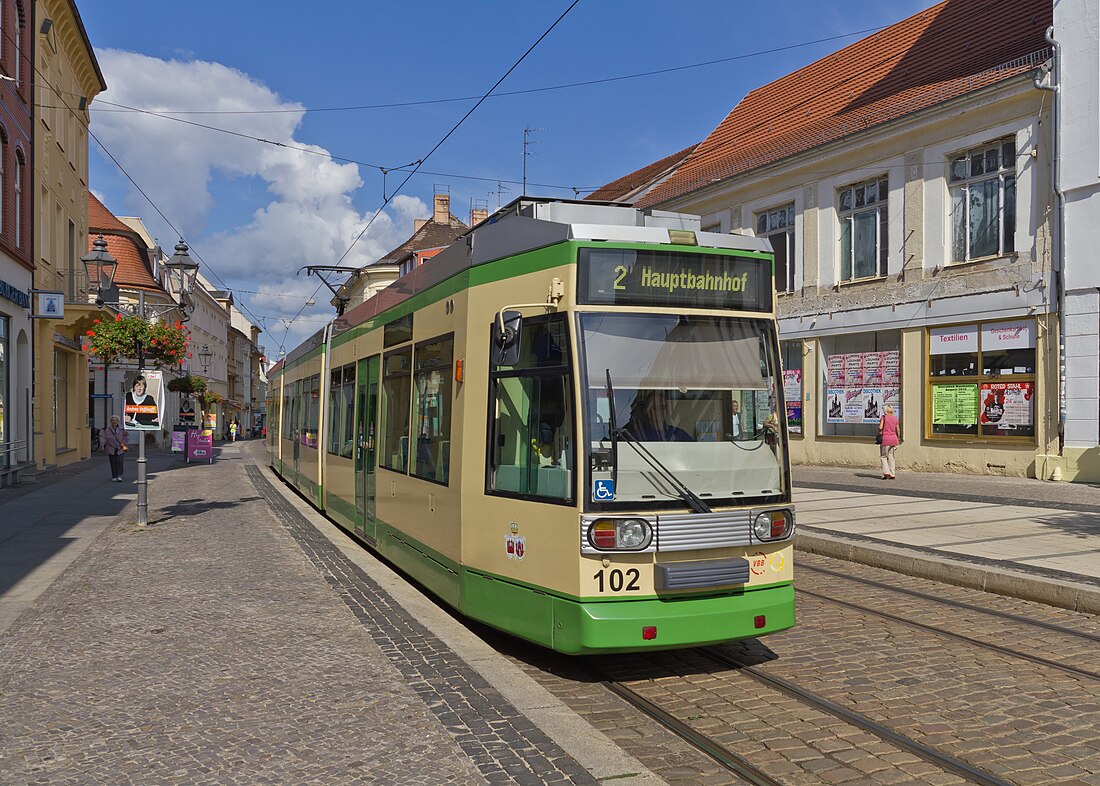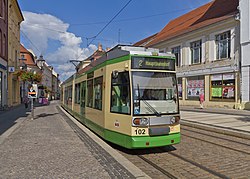Top Qs
Timeline
Chat
Perspective
Trams in Brandenburg an der Havel
Tram system in Brandenburg an der Havel, Germany From Wikipedia, the free encyclopedia
Remove ads
The Brandenburg an der Havel tramway (German: Straßenbahn Brandenburg an der Havel) is a network of tramways forming the centrepiece of the public transport system in Brandenburg an der Havel, a city in the federal state of Brandenburg, Germany.
Opened in 1897 as a horsecar system, the network was converted to an electrically powered system in 1911. It is currently operated by Verkehrsbetriebe Brandenburg an der Havel (VBBr), and integrated in the Verkehrsverbund Berlin-Brandenburg (VBB).
Remove ads
Lines
As of 2019[update], the network had four lines, as follows:

Since 6 December 2019 only lines 1 and 6 have been in operation due to structural problems with the Bridge of the 20th anniversary of the GDR, where the tram line to Quenzbrücke crosses the railway line towards Rathenow at Brandenburg Altstadt station.[2]
Remove ads
Rolling Stock
As of 2024[update] the rolling stock fleet consisted of two Tatra KT4, ten KTNF6 and six Düwag MGT6D.[3] The KTNF6 were rebuilt from KT4D vehicles between 1997 and 1999 with an extra low-floor centre section.[4] The two remaining KT4D trams serve as reserve vehicles.[4]
A procurement project for new trams was started in 2018, jointly with Cottbus and Frankfurt (Oder), and a contract was awarded to Škoda Transportation in 2020. Brandenburg will receive eight new trams with an option for four more. The first of the new trams was delivered on 18 December 2024.[5][6]
The new trams are designated ForCity Plus 48T by the manufacturer and are three-section unidirectional vehicles with a length of 28.96 m and a width of 2.3 m. They have two fully-rotating traction bogies, one under each of the end sections, and a fixed trailer bogie under the central section. The trams are 70% low-floor and have a total capacity of 151 passengers, including 50 seats.[7][6]
Remove ads
See also
References
Bibliography
External links
Wikiwand - on
Seamless Wikipedia browsing. On steroids.
Remove ads


